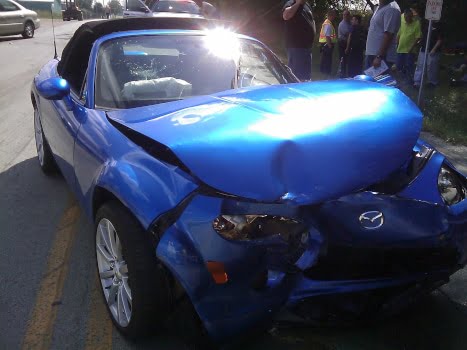As your car ages, you might start wondering, “Do I still need full coverage?” or “When is it smart to remove comprehensive and collision from my auto insurance policy?” These are common questions, especially as vehicles depreciate and budgets shift. However, before making any changes, it’s important to understand what full coverage actually includes—and what it doesn’t.
You deserve to know exactly what your auto insurance covers, so let’s break down what “full coverage” truly means, how it works, and what factors to consider if you’re thinking about removing coverage options like comprehensive and collision.
What Exactly Is “Full Coverage”?
It’s easy to think that full coverage means every possible aspect of your car is protected. However, “full coverage” isn’t a specific insurance term. It generally refers to a policy that includes liability, comprehensive, and collision coverages combined, offering broad protection against a range of incidents. But this doesn’t mean that every kind of damage or repair is covered. Here’s what’s typically included:
- Liability Coverage: Required by law, this covers damages or injuries you may cause to others in an accident.
- Comprehensive Coverage: Pays for damages to your vehicle from non-collision events, like theft, vandalism, or natural disasters.
- Collision Coverage: Helps cover repair or replacement costs if your car is damaged in a collision, whether with another car or a stationary object.
Exclusions and Limitations: Even with full coverage, some damages aren’t covered. Wear and tear, regular maintenance, and mechanical breakdowns are usually excluded. That means if your car needs repairs due to aging parts or a mechanical issue, your insurance likely won’t cover it. Understanding these exclusions is important because it helps you set realistic expectations for what your auto insurance covers—and what it doesn’t.
Why Removing “Full Coverage” Isn’t as Simple as It Used to Be
In years past, drivers were often advised to drop comprehensive and collision coverage on cars once they were 7 or 10 years old. But with the rising value and durability of modern vehicles, this advice doesn’t always apply today. Cars hold their value longer, and replacement costs are higher, so more drivers are choosing to keep these coverages, even on older vehicles. According to the Insurance Information Institute (III), about 4 out of 5 drivers still carry comprehensive and collision coverage.
Let’s dive into the key considerations that can help you decide whether to adjust your coverage based on your unique needs.

Key Factors to Consider When Deciding If You Need Full Coverage
If you’re thinking about whether to keep or remove comprehensive and collision coverage, here are some essential points to consider:
1. What Is Your Car’s Current Value?
The value of your car is one of the most important factors in deciding whether to maintain comprehensive and collision coverage. Insurance companies pay out up to the actual cash value of your car in a claim, minus your deductible. For example, if your car is worth $8,000 and your deductible is $500, the maximum payout would be $7,500.
To get a realistic estimate of your car’s worth, you can check resources like Kelly Blue Book. Remember, insurance adjusters may use multiple methods to assess the value if you file a claim. If your vehicle’s value is relatively low, the cost of comprehensive and collision coverage may not provide the financial benefit it once did.
2. How Much Are You Paying for Comprehensive and Collision Coverage?
Auto insurance costs vary widely depending on your coverage and policy details. Comprehensive and collision are distinct coverages, and you can choose to keep one while removing the other. Collision tends to be the more expensive of the two, as it covers damages from accidents with other vehicles or objects.
For instance, if you’re paying $450 annually for collision coverage, evaluate whether it’s worth the expense based on your car’s current value. Comprehensive coverage, which often costs less (e.g., $150 annually), can still provide valuable protection for incidents like theft or natural disasters.
3. Balancing Cost and Coverage as Your Car Depreciates
It’s essential to ask yourself if the cost of keeping comprehensive and collision coverage aligns with your vehicle’s worth and your budget. Some drivers feel more comfortable paying for extra coverage, while others prefer to self-insure and save on monthly premiums as their vehicle’s value depreciates.
Consider these questions:
- Can I afford to replace or repair my car out of pocket if it’s damaged or totaled?
- Does the coverage cost feel manageable for my budget and peace of mind?
- Would I feel more secure knowing my car is protected against accidents or theft?
Everyone’s risk tolerance is different, and only you can decide what level of coverage feels right for you.
Weighing the Impacts of Removing Comprehensive and Collision Coverage
When evaluating whether to remove these coverages, it’s helpful to think through the impacts carefully. Here’s a look at some of the benefits and limitations:
Benefits of Removing Comprehensive and Collision Coverage
- Lower Monthly Premiums: Dropping these coverages can lead to significant savings on your auto insurance premium, making your policy more budget-friendly.
- Flexible Use of Funds: By removing certain coverages, you free up funds that you could use to save for future vehicle repairs or a replacement vehicle.
Potential Limitations of Removing Coverage
- Increased Out-of-Pocket Costs: Without comprehensive or collision, you would be fully responsible for repair or replacement costs if your car is damaged in an accident, by theft, or through an environmental event like a hailstorm.
- Risk of Financial Burden: Especially with an older but still valuable car, covering damages out-of-pocket could present a financial challenge.
- Limited Protection Against Unforeseen Events: If an unexpected event damages your car—like a falling tree branch or a fire—comprehensive coverage can be essential in covering the cost. Without it, you’d have to cover those costs on your own.
This careful balance of protection and cost is important. You deserve the right coverage for your unique situation, so be sure to weigh each of these factors based on your vehicle and personal needs.
Frequently Asked Questions About Full Coverage and Adjusting Your Auto Insurance
Here are answers to some common questions about comprehensive and collision coverage and when it may make sense to adjust your policy.
1. What’s the Difference Between Comprehensive and Collision Coverage?
- Collision coverage pays for damages resulting from accidents with other vehicles or objects, like guardrails or poles.
- Comprehensive coverage handles non-collision events like theft, vandalism, or natural disasters.
For more details, check out our article on The Difference Between Comprehensive and Collision.
2. When Should I Consider Removing Collision or Comprehensive?
- Think about your car’s age, value, and your comfort with risk. If the cost of coverage outweighs the vehicle’s value, or you feel confident self-insuring for potential losses, it might be a good time to consider making adjustments.
3. How Does Removing These Coverages Affect My Liability Insurance?
- Removing comprehensive and collision does not impact your liability coverage, which remains mandatory. Liability coverage protects you against damages or injuries you may cause to others, and is still required by law in most states. The value of your vehicle doesn’t impact what limits you should have for liability.
4. Can I Remove Collision but Keep Comprehensive?
- Yes, you can keep comprehensive and remove collision. Some drivers prefer to keep comprehensive, which often costs less and covers incidents like theft or natural disasters, while removing collision.
Talk to Think Safe Insurance for Guidance

At Think Safe Insurance, we believe in helping you find the perfect balance of coverage and cost. Deciding whether to keep full coverage, adjust your auto insurance, or remove certain options is a big decision, and it’s one you don’t have to make alone. Our team of experts is here to answer questions, review your current policy, and provide personalized advice.
Contact us today at 813-425-1626 for a friendly, no-obligation consultation. We’ll help you explore your options so you can feel confident and secure on the road. After all, you deserve insurance that’s tailored to your life and needs.
By considering the impacts of each coverage type, along with your car’s value and your financial goals, you can make a choice that’s right for you and your budget. Remember, driving with confidence and peace of mind matters, and we’re here to make that easier.

